When his father became emperor in 244, the younger Philip was appointed Caesar. In 247 he became consul, and was later elevated by his father to the rank of Augustus and co-ruler.
His father was killed in battle by his successor Decius in 249. When news of this death reached Rome, Philip was murdered by the Praetorian Guard. He died in his mother's arms, aged twelve years.
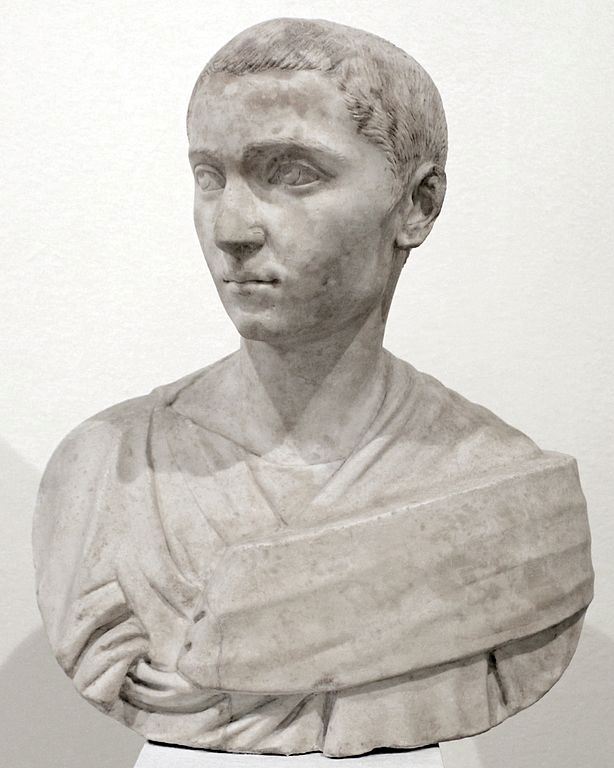
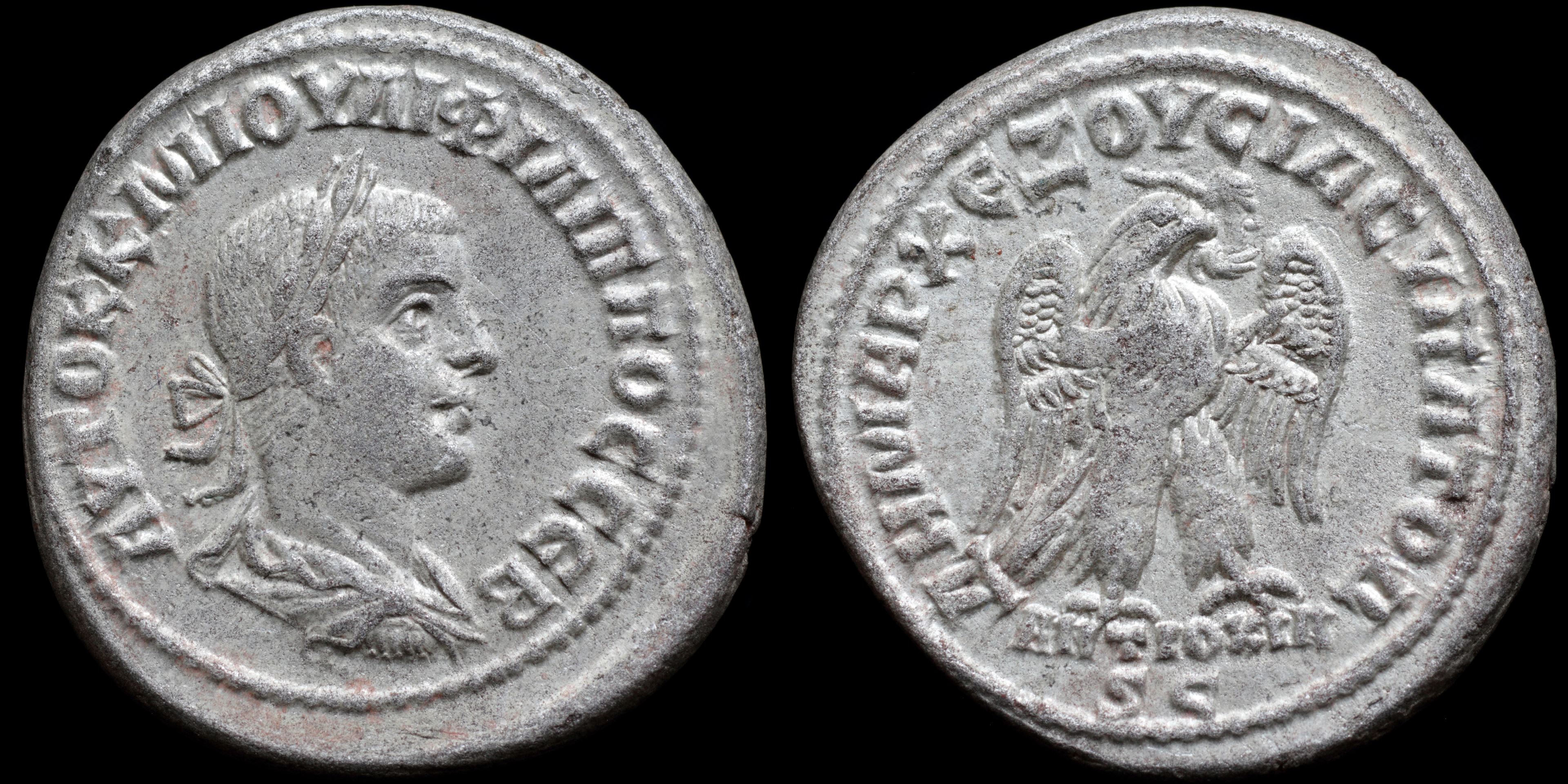
Reverse: eagle right, wreath in beak; ΔHMAPX EΞOYCIAC YΠATO Δ ANTIOXIA / S C
Die Orientation: -
Weight: 11.7 g
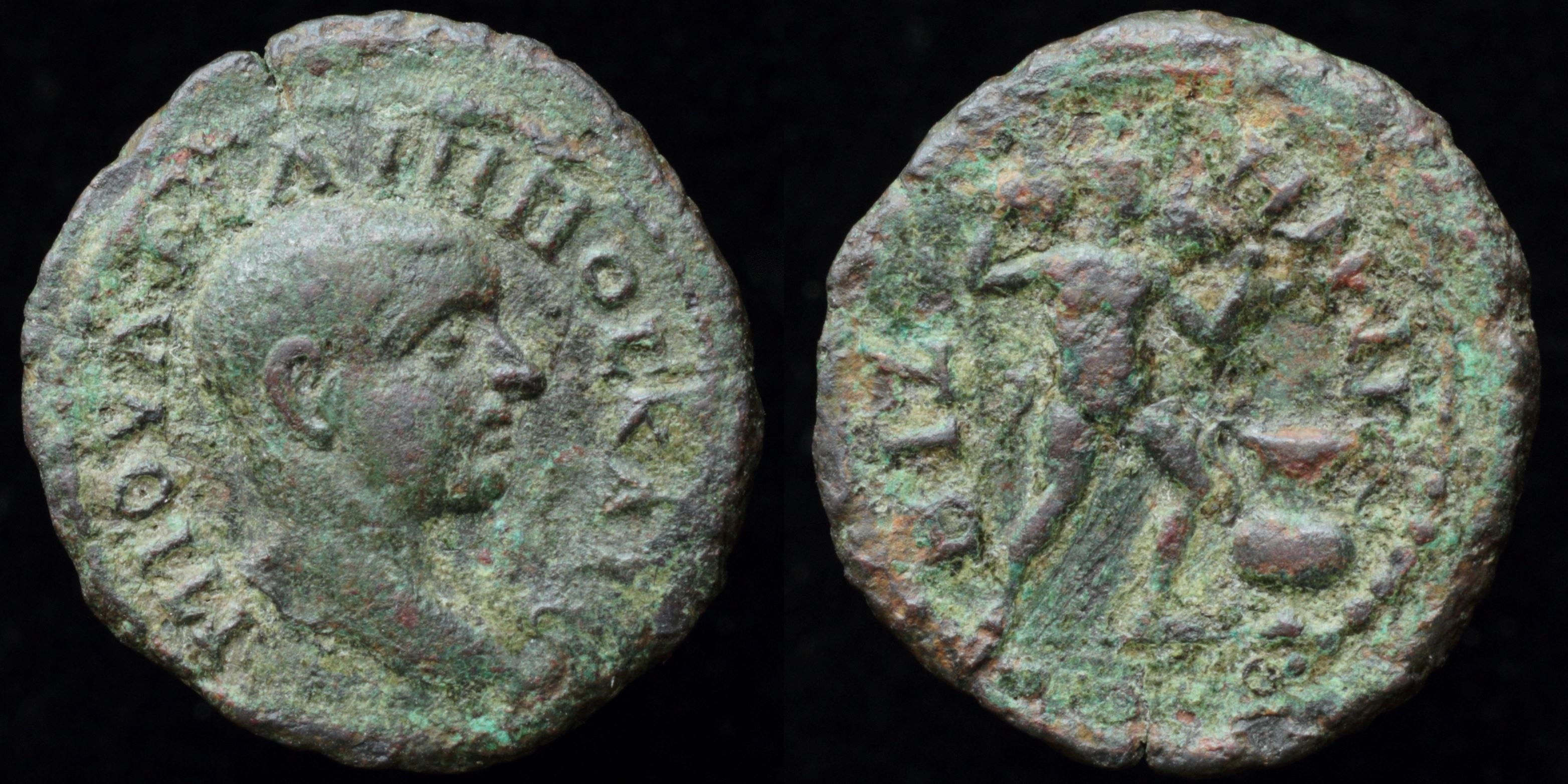
Reverse: Silenos walking right naked with tail, pours wine from wineskin on his shoulders into large krater; BIZV_H (NWN)
Die Orientation: -
Weight: 3.52 g
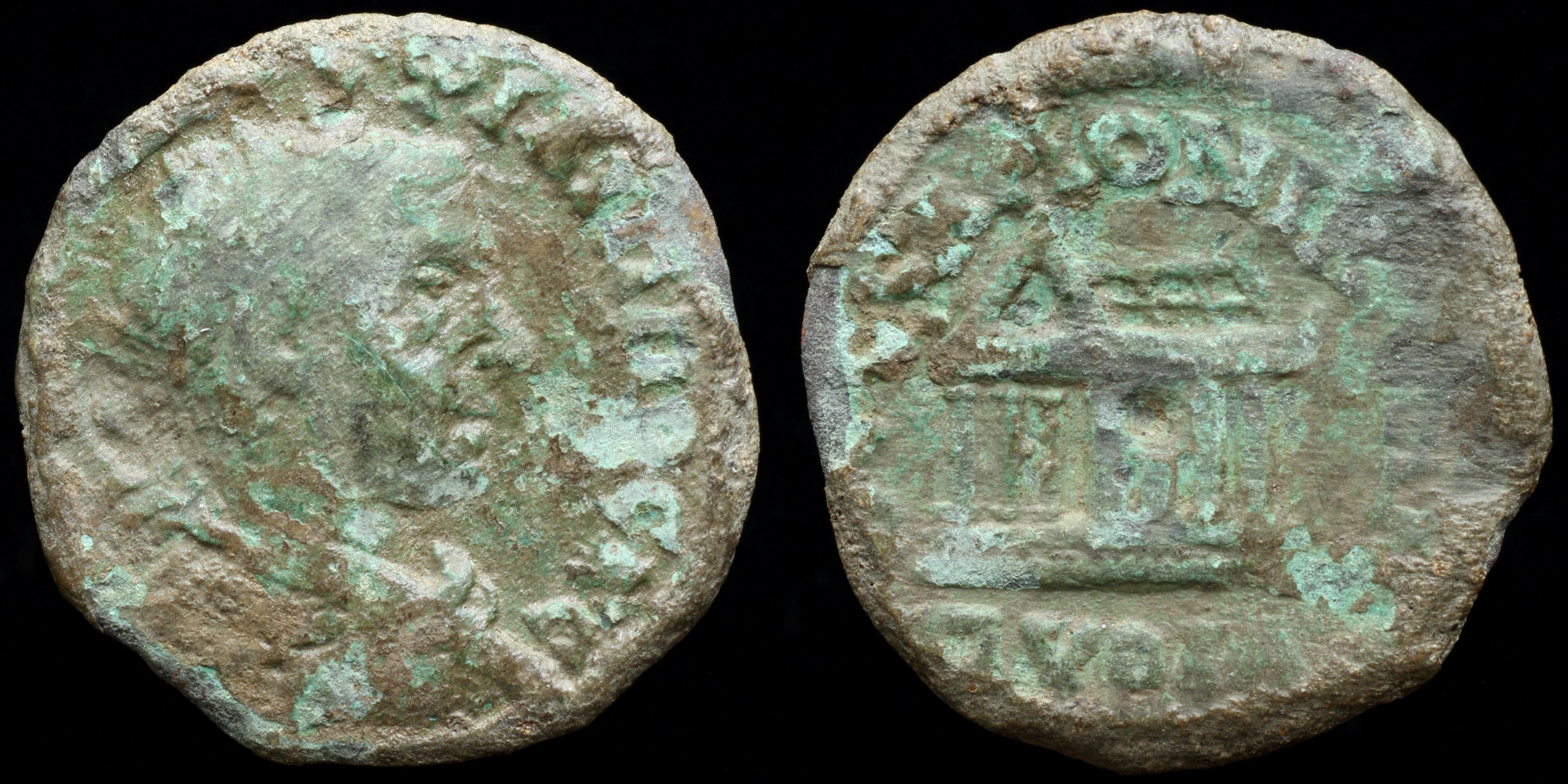
Reverse: tetrastyle temple seen in prospective (3/4 left); ΘECCAΛONIKEΩN ΠYΘIA
Die Orientation: -
Weight: 5 g
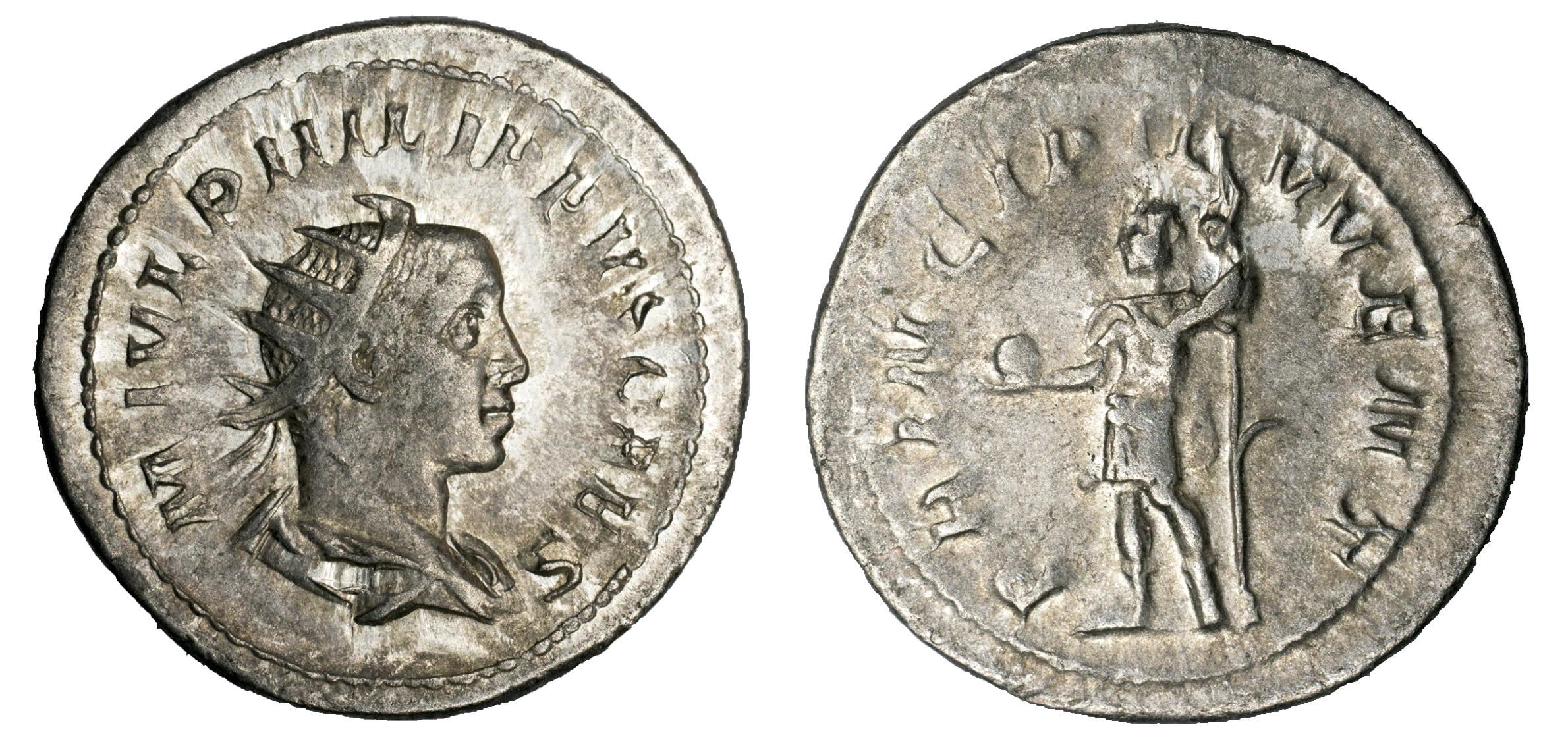
Reverse: PRINCIPI IVVENT - Philip, in military attire, standing left holding globe and resting on spear
Die Orientation: 0 H
Weight: 0 g
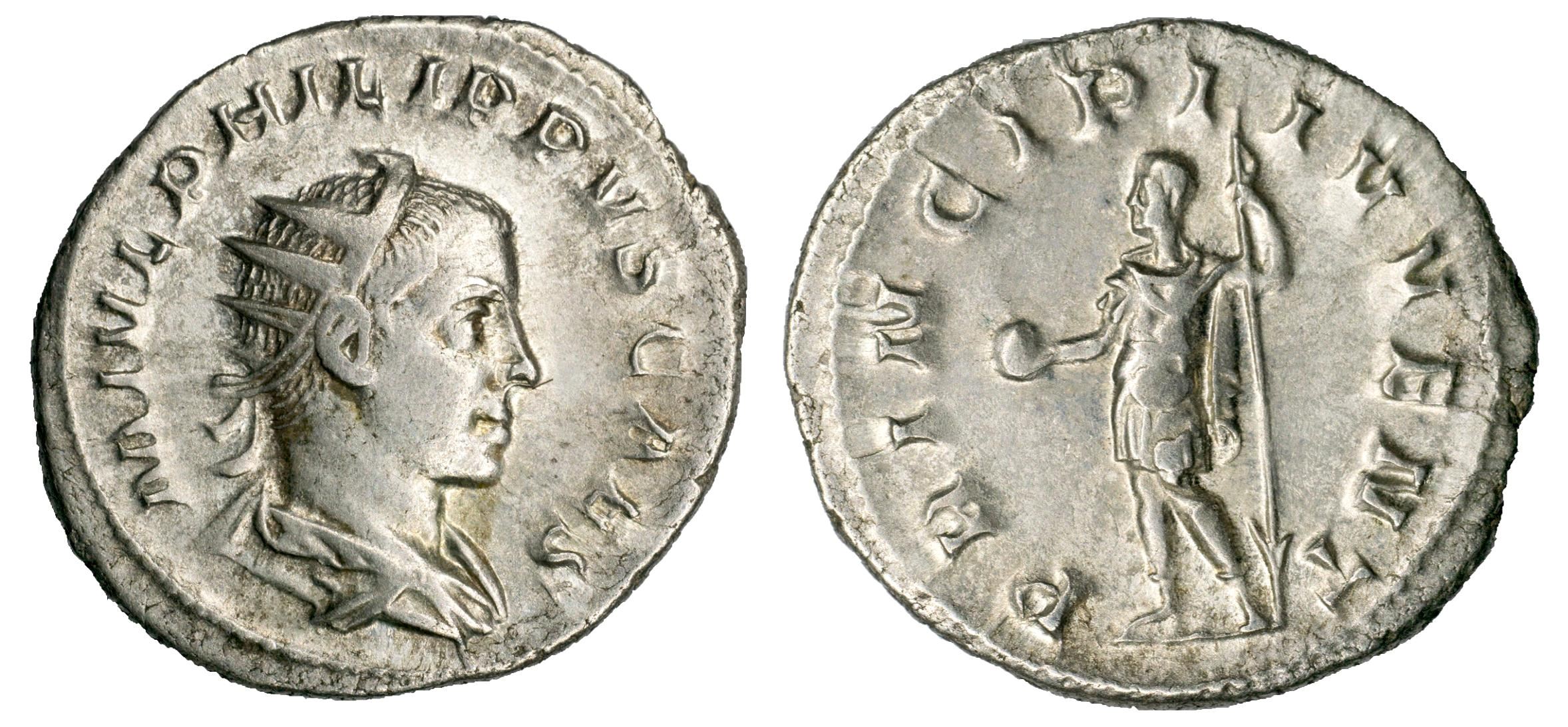
Reverse: PRINCIPI IVVENT, Philip II, in military dress, standing right with globe & transverse spear
Die Orientation: 0 H
Weight: 3.95 g
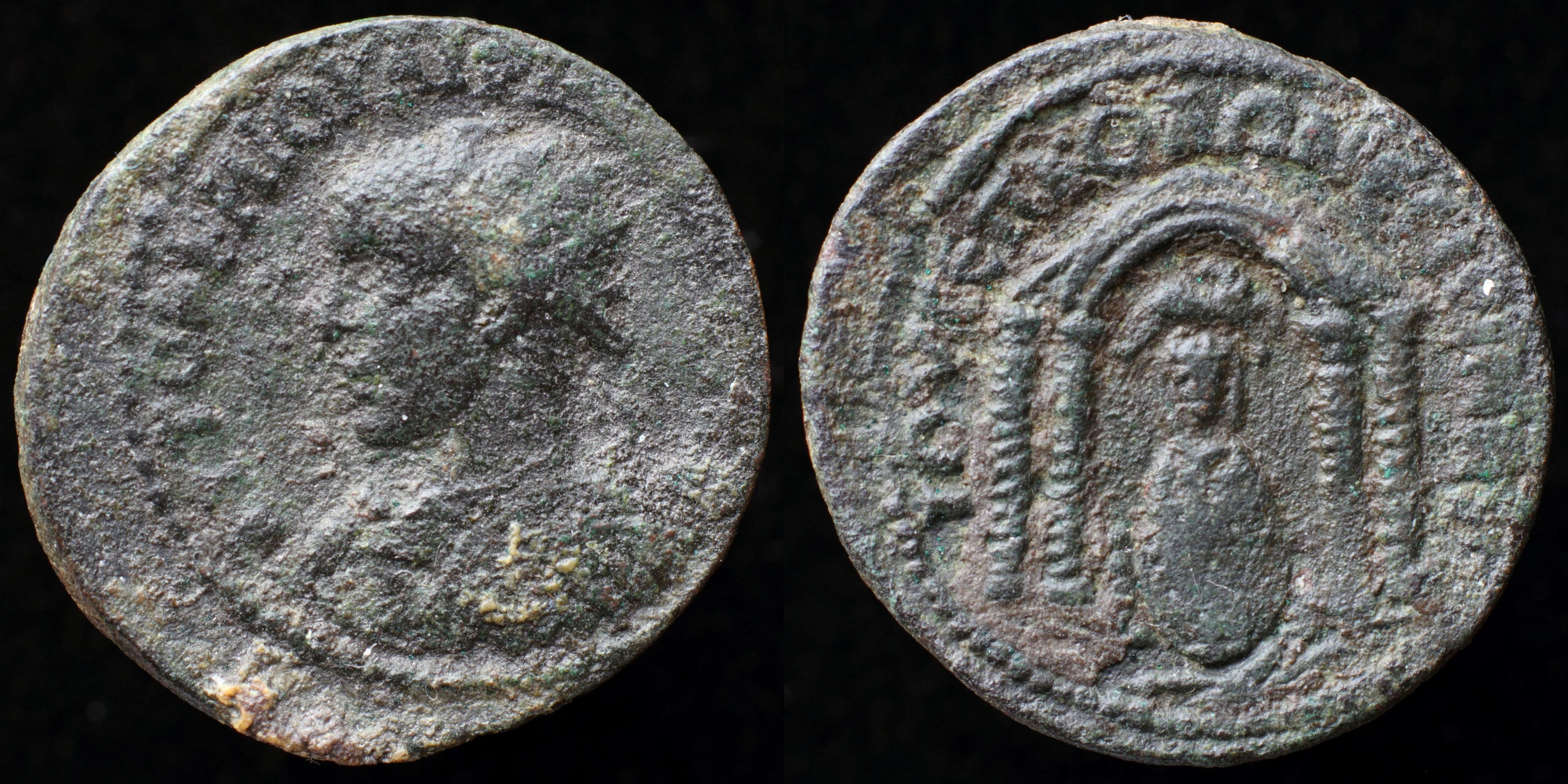
Reverse: facing seated statue of Tyche, ram to the right with head left above and river-god swimming to the right below, all inside tetrastyle temple temple with arched central bay; IOV CEΠ KOΛΩ NECIBI MHT
Die Orientation: -
Weight: 8 g
.jpg)
Reverse: CIΛΛVEΩN, Tyche standing face left, holding rudder and cornucopia
Die Orientation: 12 H
Weight: 9.94 g
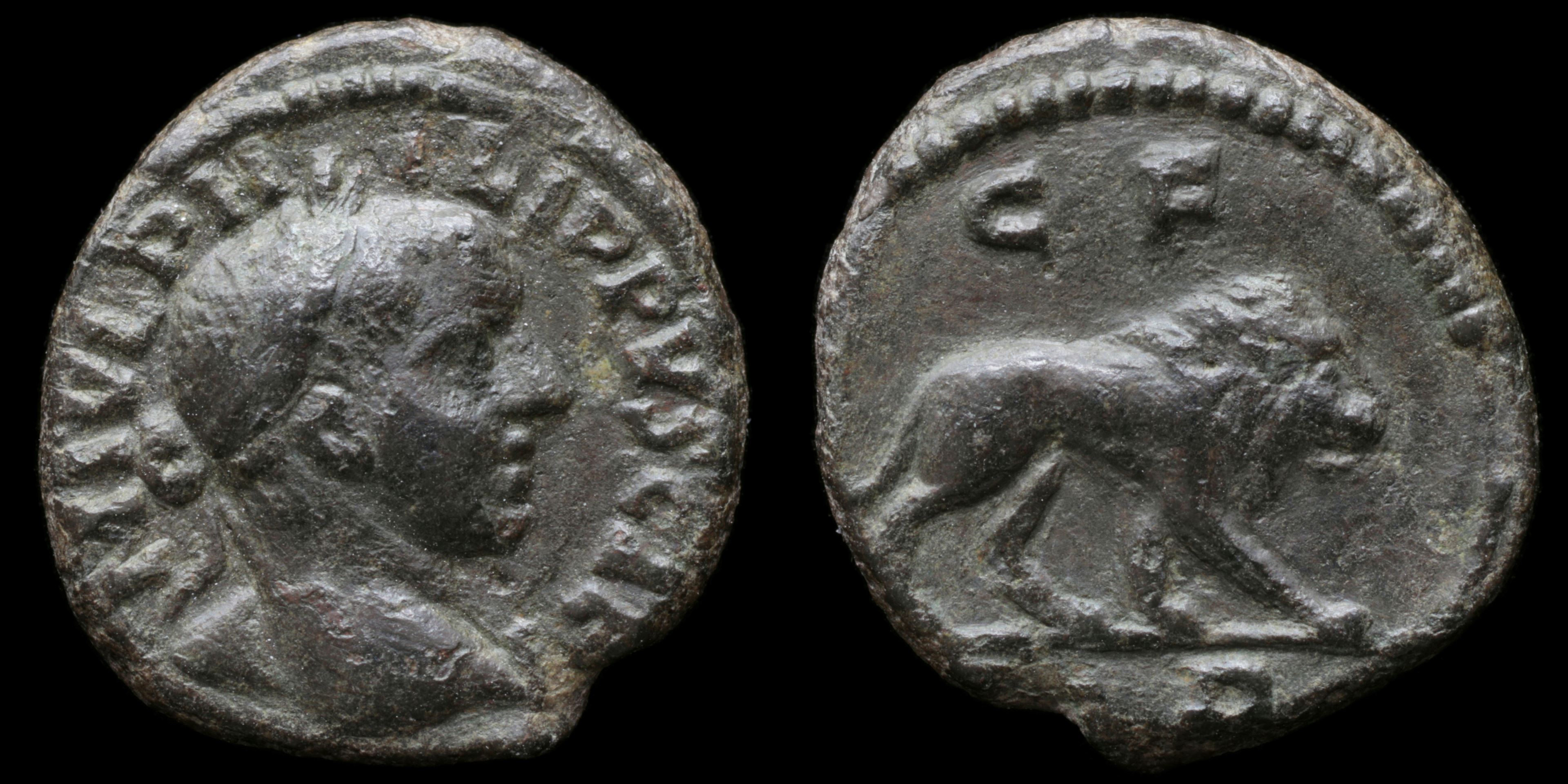
Reverse: Lion right; C F / P D
Die Orientation: -
Weight: 3 g
ex CNG
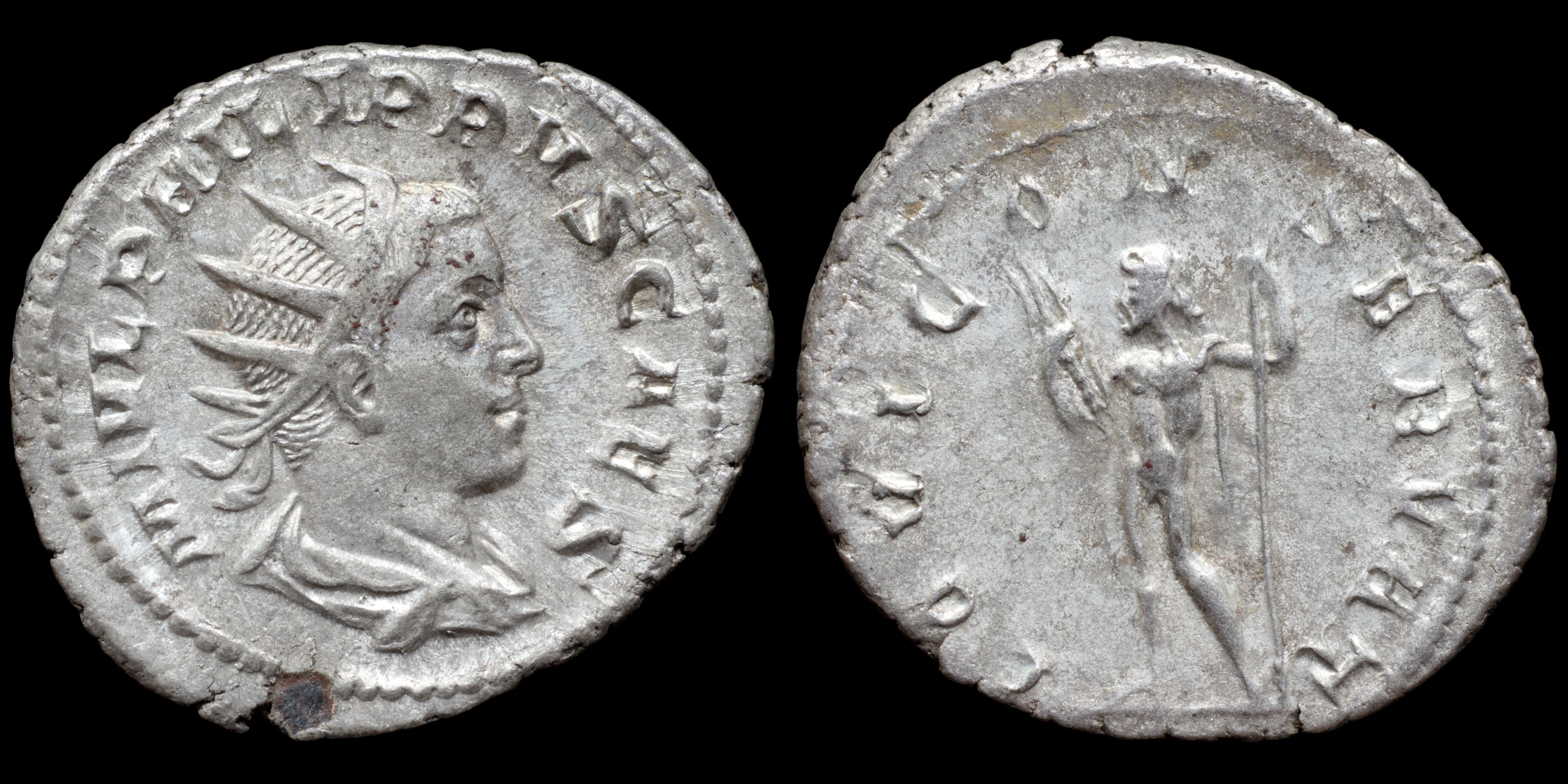
Reverse: Jupiter standing, holding scepter and thunderbolt; IOVI CONSERVAT
Die Orientation: -
Weight: 3.75 g
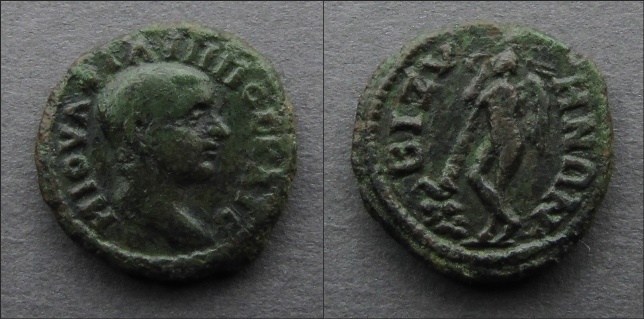
Reverse: BIZVHNΩN, Thanatos (god of death) or weary Eros extinguishing torch.
Die Orientation: 7 H
Weight: 3.32 g
.jpg)
Reverse: MAPKIANOΠOΛEITΩN, bearded serpent coiled left; E (mark of value) to right
Die Orientation: 1 H
Weight: 12.42 g
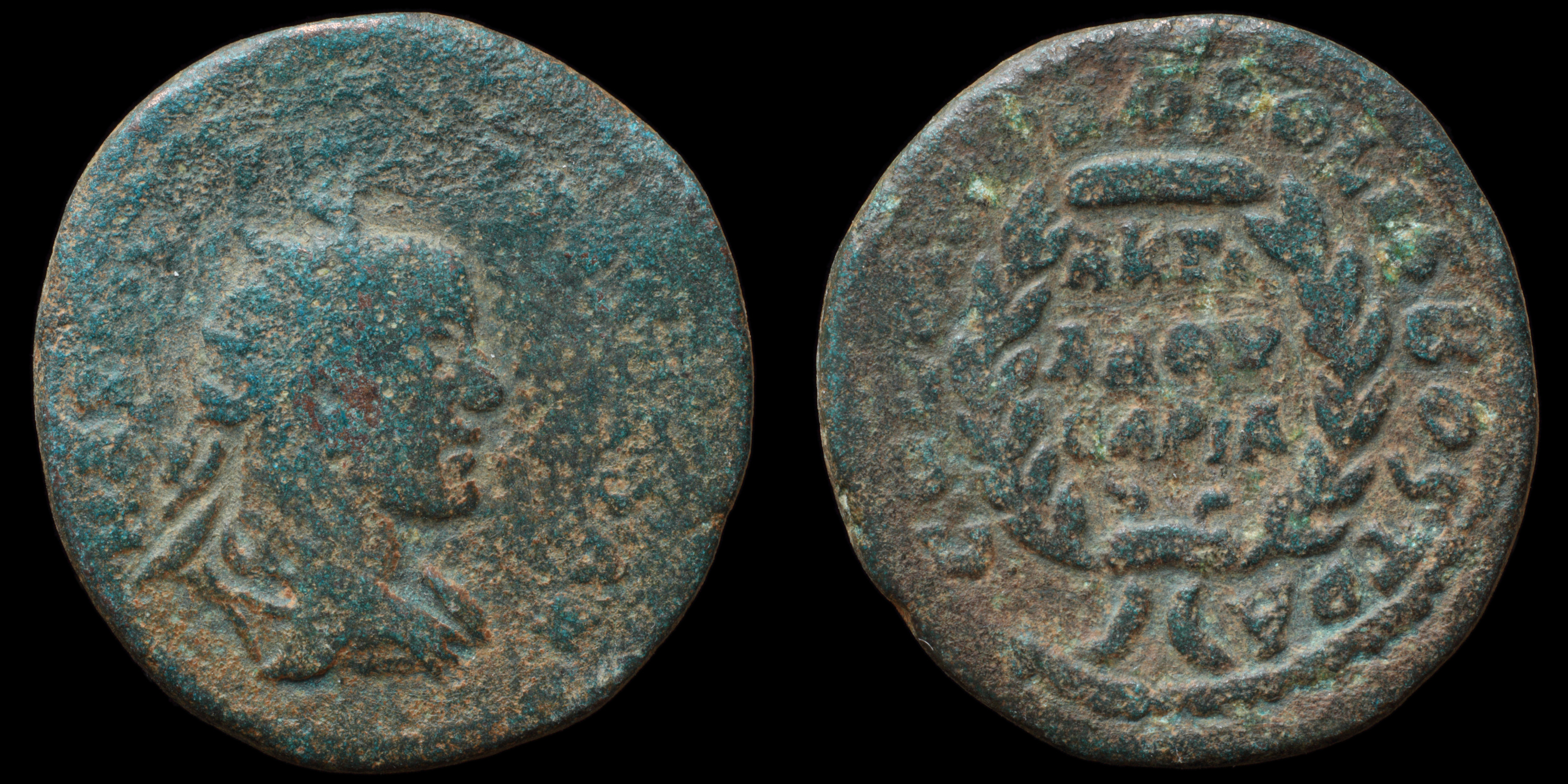
Reverse: wreath; COL METROPOLIS BOSTRA AKTI / A ΔOV / CAPIA
Die Orientation: -
Weight: 14.7 g
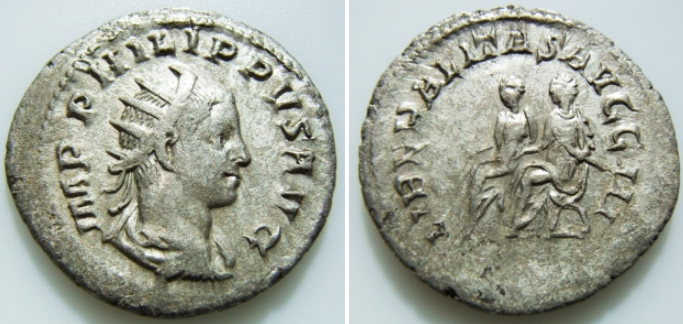
Reverse: LIBERALITAS AVGG III - Philips I & II seated left on curule chairs distributing cash.
Die Orientation: 12 H
Weight: 3.27 g
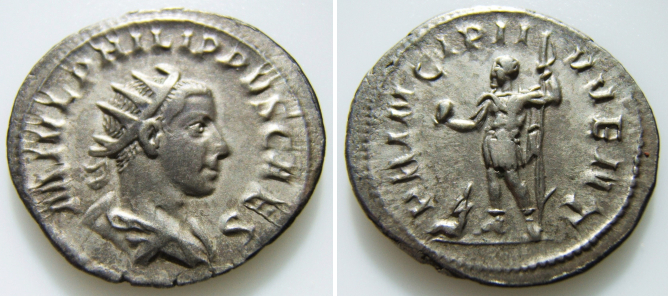
Reverse: PRINCIPI IVVENT - Philip II standing left with globe and spear; captive at feet.
Die Orientation: 6 H
Weight: 3.45 g
